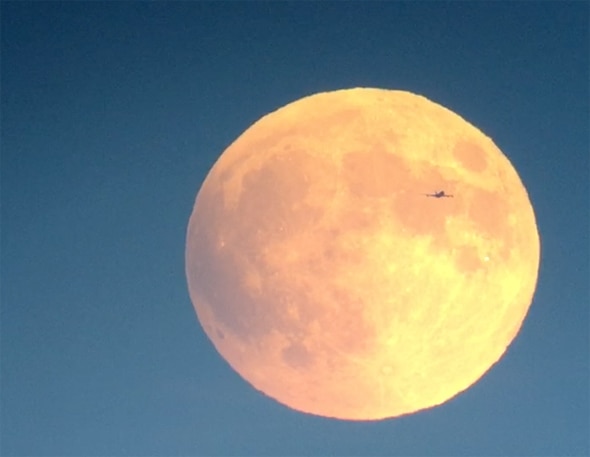Create a free profile to get unlimited access to exclusive videos, sweepstakes, and more!
Global Epic Eclipse

Well, despite some baseless fears, we’re still here after Sunday night’s lovely lunar eclipse.
It was quite nice here in Colorado; the Moon was still very low to the horizon when it started to pass into the darkest part of the Earth’s shadow. I was just finished setting up my Celestron Regal M2 80ED spotting ’scope to watch when I saw an airplane approaching the rising Moon … and as I shot the video, to my surprise I got two planes transiting!
That was fun. The Moon was still yellowish as it rose due to atmospheric effects. It was just about the enter the darker part of the Earth’s shadow (called the umbra) but even then you can see the left side is darker and redder than the right.
I also did a live Periscope as the Moon darkened, winding up with more than 8,000 people watching at different points. I love seeing so many folks interested in what’s going on in the sky!
I think my video is pretty cool, but master astrophotographer Thierry Legault did me one better. Well, more than one: He caught the International Space Station transiting the Moon during the eclipse!
That is so cool. He told me that, to the best of his knowledge, this is the first time anyone has caught the ISS transiting the Moon during a lunar eclipse on video.
I want to share a couple of photos, too. As the sky darkened, the eclipsed Moon rose through several thin cloud banks, and I liked the feel of this one:
You can see the eclipsed part of the Moon on the left. It helps sometimes to have something else in the field of view when you’re taking pictures like this. A cloud is nice, but sometimes something more recognizable can turn a nice shot into a fantastic one.
Like, say, this:
Wow. Yeah, sometimes it’s all about the framing.
If you want to learn more about these events, I talk all about them in my Crash Course Astronomy episode on eclipses. The next lunar eclipse visible to the U.S. won’t be until 2018, but August 2017 will bring the Great American Solar Eclipse. Stay tuned for more on that.


























